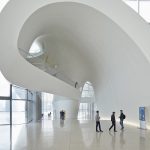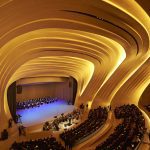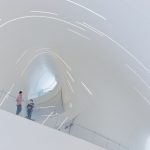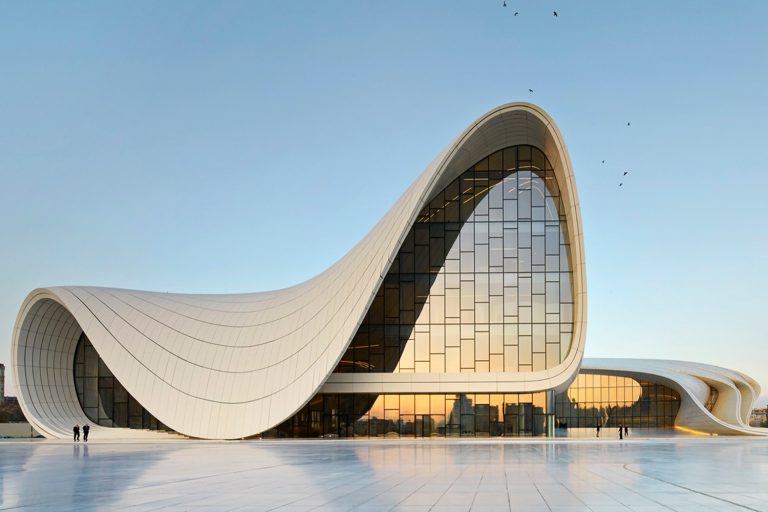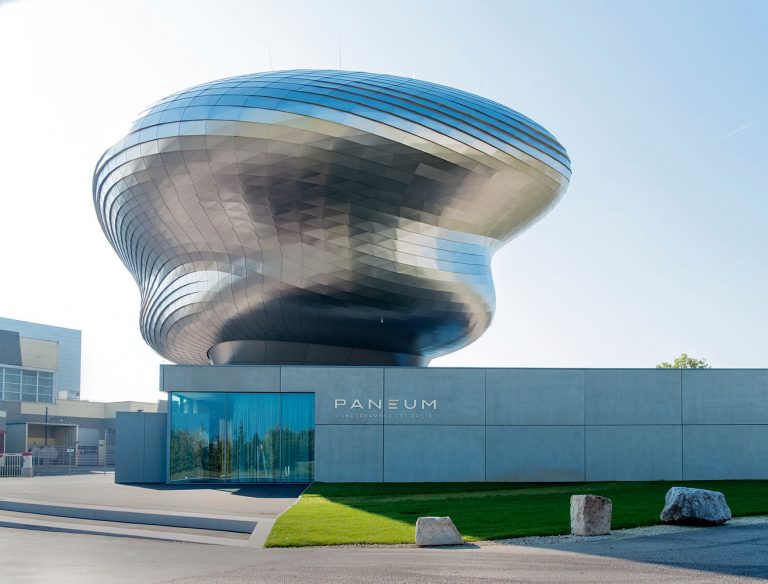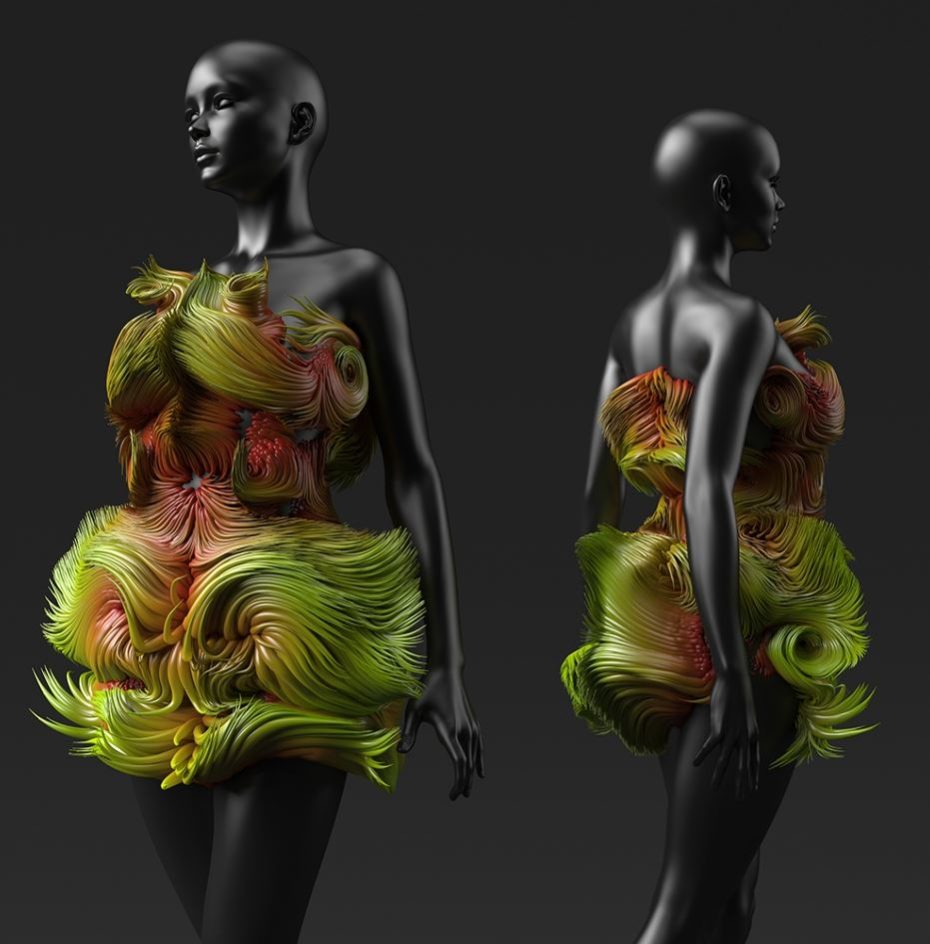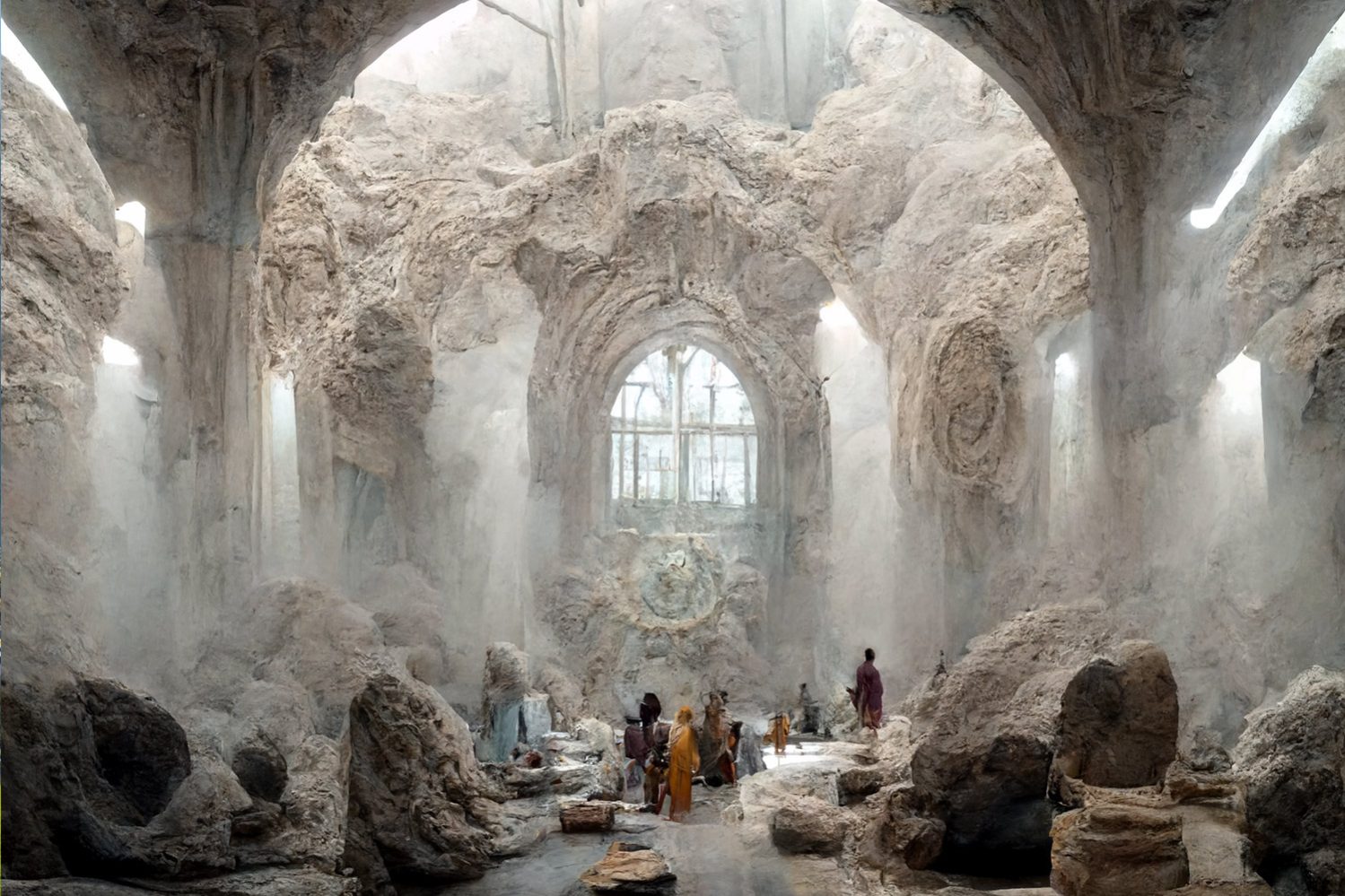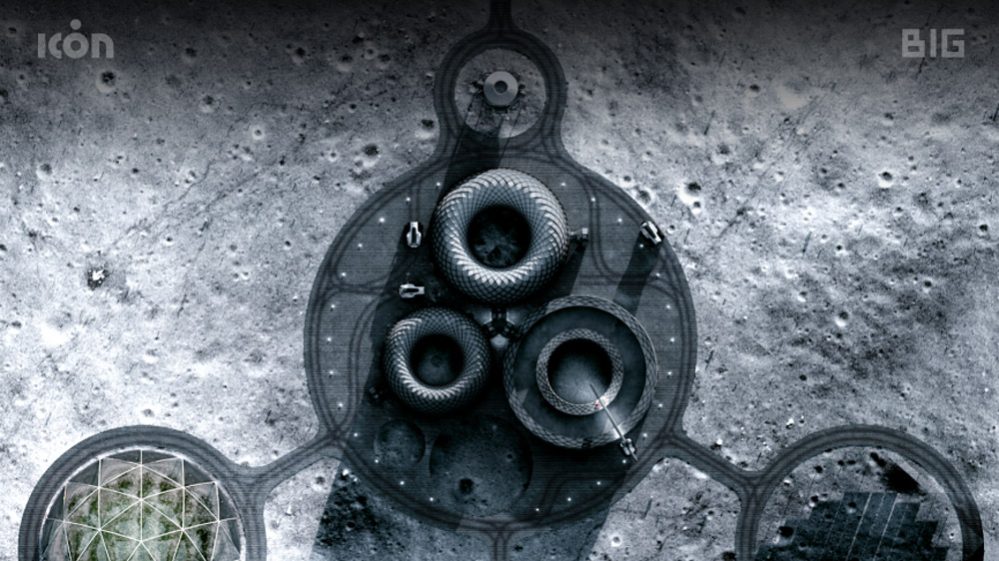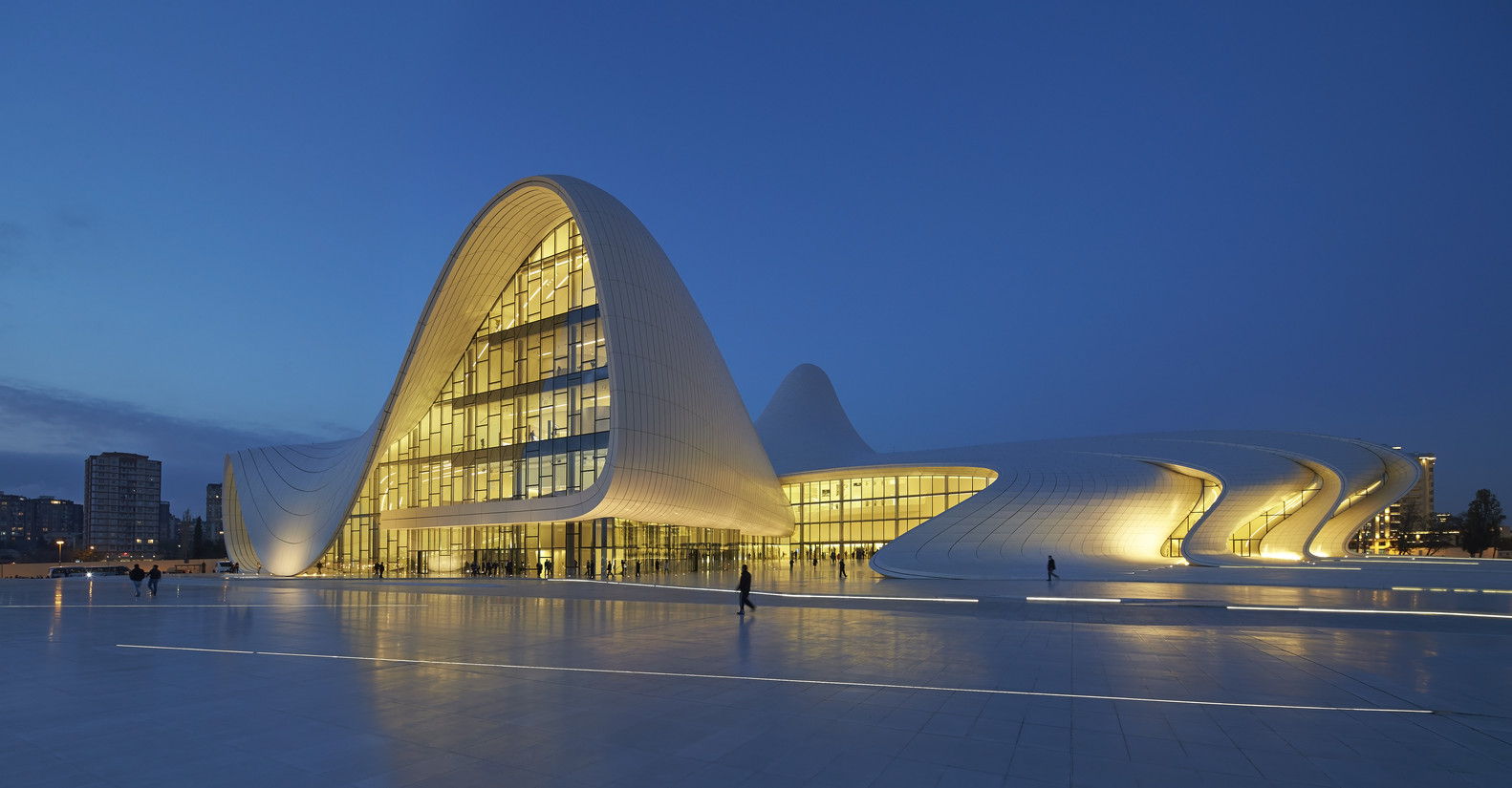
Featured in the show ‘Extreme Engineering’, a documentary television series under the episode called “Azerbaijan’s Amazing Transformation”, The Heydar Aliyev Center is an architectural marvel. It depicts the marvelous wonder of architecture and engineering. Heydar Aliyev Center, which is a 57,500 sq. meter. The structure was built in Baku, Azerbaijan. Designed by Iraqi-British architect Zaha Hadid, this iconic building complex is known for its grand architecture and engineering techniques. It is an example of innovative and advanced visions of using concrete in the free-flowing form into reality. Moreover, this imagery of the parametric form, free-flowing, curved style. The sharp angles and curves have thus, set an iconic identity to the structure.

The play of covers and angles is metaphoric of the sense of romance and optimism in Azerbaijan. The Heydar Aliyev Center positions Azerbaijan bright in the world’s eyes post its independence from the Soviet Union in 1991. Therefore, instilling the idea of how powerful architecture can be in setting an iconic and political identity. The building, now the primary center for Azerbaijan’s cultural programs, breaks the stereotypical visual language of Soviet architecture, which is usually rigid and monumental. The building complex, with its advanced construction techniques and the potential of concrete to create such parametric shells, instills the idea of “new possibilities” and marks the identity of the Azeri culture. Thus, spreading hope and optimism through a built environment.

The massive undulations and folds in the outer shell, which continue the curve into the plaza surface, indicate how the built structure seamlessly merges with the landscape. Thus, defining an unusual urban fabric.
The free-flowing curves induce a welcoming, embracing, and warm aura. Therefore, orienting the visitors at different levels into the interior. However, the use of monotone materials and the smoothness achieved in concrete help blur the distinction between the built, the unbuilt, the architectural intervention, and the urban landscape. Hence, the building envelope, the urban plaza, form, shape, interior, and exterior together convey a story to the visitors, a beautiful and massive story.

The design also considers the Islamic history and architectural elements prevalent in the region. This is evident through the rows, grids, or series of pillars in perspective, typical features of Islamic architecture. Moreover, the structure also showcases a series of relief work in the form of calligraphic and ornamental patterns in the interiors on the carpets, walls, ceilings, and domes. Thus, establishing a seamless design language in the volume of the space.

The idea is to connect the architectural heritage and history through a nuanced contemporary interpretation. Moreover, to focus on the continuous relationship between the exterior and interior, the lighting throughout the premise has been strategically designed to imbibe distinctive looks to the structure day and night. Furthermore, the semi-reflective glass used in the building as glazing gives a tantalizing ambiance. This ambiance awakens visitors’ curiosity while not revealing the play of curves in the interiors.
Thus, The Heydar Aliyev Center is an iconic symbol that showcases the exploration of materials, techniques, and visual and sensory design elements, altogether indicating the potential or ‘out of the box’ visions.

Project info:
Location: Baku, Azerbaijan
Studio: Zaha Hadid Architects
Design: Zaha Hadid, Patrik Schumacher
Project Designer And Architect: Saffet Kaya Bekiroglu
Year: 2013
Area: 101801 m²
Category: Cultural Center
Manufacturers: Mikodam, Atelier Vierkant, Coswick Parket, Ikizler, Lindner, Penetron, Soprema, Zumtobel, Brimat
Photographs: Iwan Baan, Hufton+Crow, and Helene Binet













